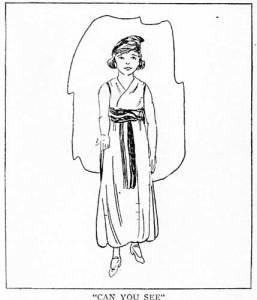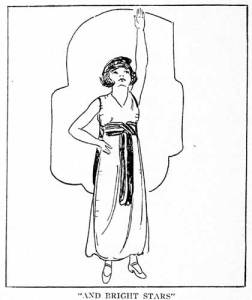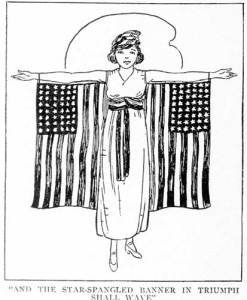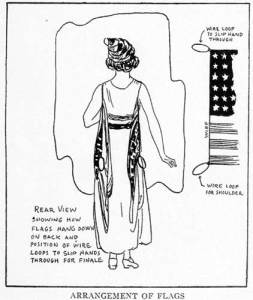How to pantomime the National Anthem | The Star-Spangled Banner
From baseball games to symphonic concerts, everyone in the U.S. has heard someone sing or play the National Anthem to honor the American flag. Very few, however, have seen “The Star-Spangled Banner” in pantomime.

But a book exists that could change that. At one time, it was a bible for acting out Francis Scott Key’s song, which is now celebrating its bicentennial. That was when radio was in its infancy and TV didn’t exist. In those early decades of the 20th century, families, schools, neighbors and other groups turned to amateur theatrics for entertainment, including sing-alongs and plays.
With that audience in mind, a Chicago publisher released “Denison’s Illustrated Song Pantomimes,” and one of the series was “The Star-Spangled Banner.” Created by May Dixie, who did the same for “Swanee River,” “Comin’ Through the Rye” and other songs, the Anthem pantomime included instructions and illustrations.

The book, released in 1922, has guidance on costuming, hand gestures and stage presence. “The performer may wear a white evening gown or other costume of soft, clinging material, with white slippers or any shoes for walking,” the author wrote. “A girdle or sash of red, white and blue is worn around the waist.”
The instructions also required “two American flags, preferably silk,” that were draped down the back of the pantomimist.
Dixie recommended two ways for the performance to proceed: “the singer appearing on the platform and enacting the story while singing it; or the vocalist remaining concealed, and singing while the presentation is made in pantomime by another person.”

She also insisted that the performers “rehearse the presentation thoroughly so that all gestures may be graceful and natural and properly timed, each position blending smoothly into the next.”
Every phrase of “The Star-Spangled Banner” came with a specific gesture for the performer to follow. For example, “can you see” was to be accompanied with the “body bent a little forward, and right arm extended toward audience, palm upward.”
 “Whose broad stripes,” Dixie wrote, should be indicated by “head thrown back; eyes up; expression admiring and happy.”
“Whose broad stripes,” Dixie wrote, should be indicated by “head thrown back; eyes up; expression admiring and happy.”
The finale, “home of the brave,” was to be delivered with “right foot advanced; body bent forward lightly; both arms extended toward audience,…palms upward; head not so far back…but still with chin somewhat raised; eyes looking at audience; smiling brightly.
(Interested in giving the pantomime flag song a try? The book can be found here: https://ia600409.us.archive.org/1/items/starspangledbann00dixi/starspangledbann00dixi.pdf.)
